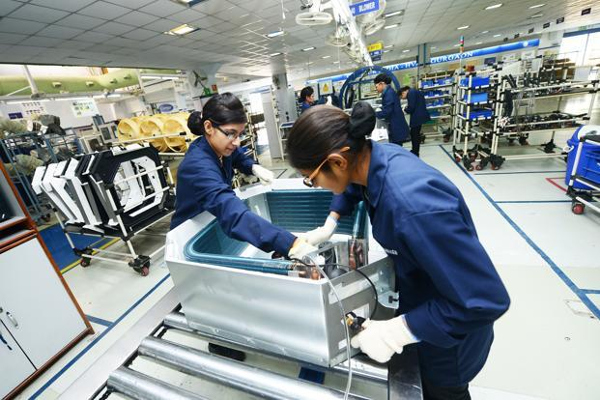Following the announcement of incentive schemes for mobile and IT hardware manufacturing, the government now is considering a major scheme for establishing display fabrication units in India. The Ministry of Electronics and Information Technology (MeitY) has requested expressions of interest (EoIs) from organisations interested in establishing LCD/OLED/AMOLED/QLED-based display fabrication units in India.
The information gathered in response to this EoI will be used to develop a plan for establishing display fabrication units (FABs) in the country. Companies have until April 30, 2021 to submit their applications.
According to government data, displays account for a substantial portion of the total bill of materials (BoM) in electronic products. Displays account for more than 25% of the BoM in smartphones and more than 50% in LCD/LED TVs. The display panel market in India is estimated to be worth US$ 7 billion and is expected to reach ~ US$ 15 billion by 2025. Imports are the only way to meet current demands.
The scheme’s budget will be assessed after all organisations submit their applications and recommend the kind of incentives they demand.
The government intends to create a countrywide ecosystem of various electronic components. I n the recently introduced production linked scheme (PLI) scheme for IT hardware manufacturing, a localisation schedule was included.
The global electronics industry is currently estimated at US$ 2 trillion and is projected to grow strongly as emerging technologies gain traction. India’s global electronics manufacturing share has increased from 1.3% in 2012 to 3.6% in 2019. Domestic electronics manufacturing has grown significantly, increasing from Rs. 1,90,366 crore (US$ 26.18 billion) in 2014-15 to Rs. 5,33,550 crore (US$ 73.37 billion) in 2019-20 at a CAGR of 23%.
Organisations must provide information about proposed locations for the FAB, as well as land, water, and power requirements, when submitting applications. Technical specifications, operational details such as capacity, and financial details such as source of funding, ownership structure, and so on must all be provided. The organisations should list the government assistance they require, such as grant-in-aid, viability gap fund, tax incentives, infrastructure support, regulatory waivers, and so on.
By focusing on export markets and incentivizing manufacturers to become globally competitive, India anticipates to more than fivefold its electronics manufacturing to US$ 400 billion by FY25.
The government launched a Rs. 41,000 crore (US$ 5.64 billion) PLI scheme for large-scale electronics manufacturing in April 2020. The scheme provided incentives ranging from 4% to 6% on incremental sales over the base year for products manufactured in India for a period of five years following the base year as described. Another scheme for IT hardware with a budget of Rs. 7,350 crore (US$ 1.01 billion) was launched earlier this month. Over a four-year period, the government will offer incentives ranging from 4% to 1% for manufacturing laptops, tablets, all-in-one PCs, and servers in India.
Source: IBEF
You may also like
-
Navigating India’s Skill Landscape
-
Trade Connect E-platform For Exports Is Single Window, Fast, Accessible And Transformational: Shri Piyush Goyal
-
India-us Working Together In Areas Like Critical Minerals, Supply Chains And Advanced Technologies: Shri Piyush Goyal
-
Cabinet Approves Health Coverage to All Senior Citizens of the Age 70 Years and Above Irrespective of Income
-
Cabinet Approves PM Electric Drive Revolution in Innovative Vehicle Enhancement (PM E-DRIVE) Scheme With An Outlay of ₹.10,900 Crore
